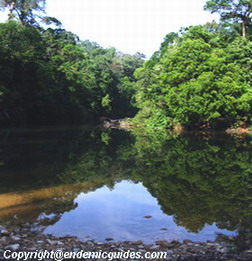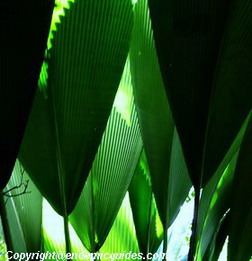|
Welcome To
ENDAU ROMPIN NP - PENINSULA MALAYSIA
|
Introduction and History
Set on the borders of Pahang and Johor in Southeast
Malaysia, Endau-Rompin National Park is made up of a lush,
pristine tropical rainforest. Covering an area of 48,905
hectares (800 sq. km), it is the second largest national
park in Peninsula Malaysia after Taman Negara and has been
upgraded to a national park in 1980s. With rock formations
dating back some 248 million years, Endau-Rompin is mostly
hilly with some prominent sandstone plateaus. It also
happens to be the watershed of several rivers such as Endau
River, Selai River and Jasin River.

This
two-century old extensive lowland forest is home to several
rare and endangered species. In 1985 and 1986, a scientific
expedition identified 25 new species of plants within the
area. Scientific interest aside, Endau-Rompin National Park
is the perfect haven for adventure seekers. Its numerous
legends and myths handed down through the years add to its
overall appeal.
In 1892, miner and surveyor H.W.Lake and Lieutenant
H.J.Kelsall entered the Endau-Rompin area to conduct
scientific research and documentation. They recorded and
collected inexhaustible specimens from the area and noted a
healthy number of large animals such as elephants, the
Sumatran rhinoceros and deer traversing the area.

In 1933, with the help of Lake and Kelsall’s documentation
of the area and its flora and fauna, Endau-Kluang area was
declared a forest reserve. Later in 1972, the reserve was
further expanded to include an area within the Lesong Forest
Reserve in Pahang. After a number of years of dispute, the
Johor government finally created Endau Rompin National Park.

Flora and
Fauna
Botanists have found many new species of flora and fauna
along the stream and on the nearby hills in Endau-Rompin
National Park. The most spectacular of the discoveries was
the fan palm species, characteristic of the ridge and
hilltop, named the Livistona Endauensis dominating the
forest on the plateau of Gunong Janing Barat. Others
interesting plants include the ‘Rhopa Coblaste’, more
commonly know as the climbing bamboo, and the walking stick
palm or ‘Phychorapis Singaporensis’, identified by its
slender stems and feather-like leaf fronds, and many
varieties of toadstools and orchids.

The Park
teems with wildlife - tigers, elephants and wild boar, and
the largest surviving population of Sumatran rhinoceros,
which is highly protected and endangered. The only ape
species of the area, the binturong (Arctictis binturong) and
the white-handed gibbon are also found here. Housing the
chirping drongos, hornbills and argus pheasant; the forest
is also home to butterflies and fruit piercing moths
belonging to the ‘othreis’species. Recent research also
found of one of the world’s smallest dragonfly named
Nannophya Pygmea.
Continue Page 2 >>
|